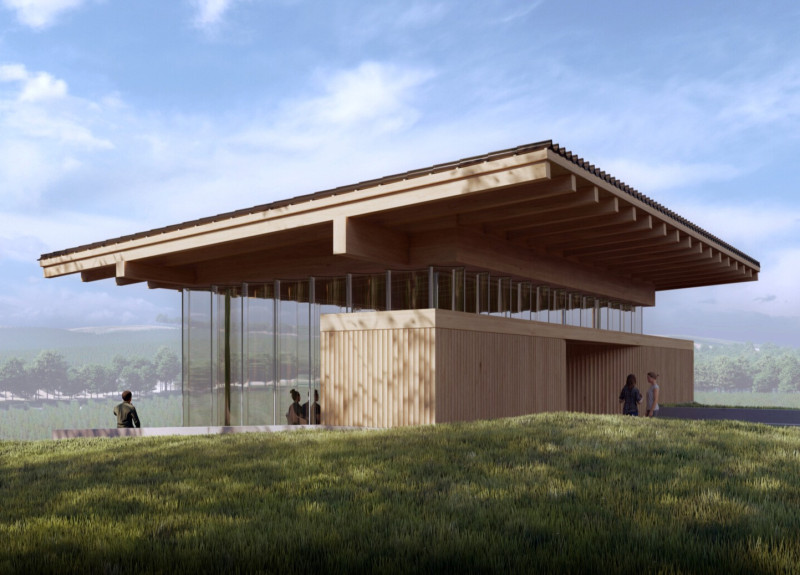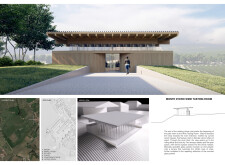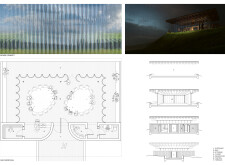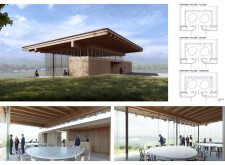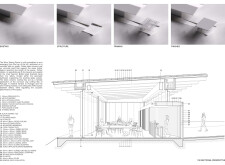5 key facts about this project
The Monte D'Oiro Wine Tasting Room is located at the edge of beautiful vineyards, surrounded by rolling fields. It serves as a space dedicated to wine tasting, merging the building with the natural landscape. The design encourages a smooth transition from the outside to the inside, creating an intimate setting for visitors that highlights the region’s wine-making heritage.
Architectural Form
Visitors approach the Wine Tasting Room by walking down a ramp that leads to a welcoming entrance. This entrance features curved wood masses that capture attention and draw visitors in. These wooden elements are finished with carefully carved strips, providing both a comfortable feel and an attractive appearance. Upon entering through a pivot door, guests can enjoy vast views of the fields outside, enhancing the overall atmosphere of the space.
Interior Organization
Inside, the layout is open and focused on two terrazzo tables that serve as central points within the room. These tables encourage visitors to interact. The design keeps service areas hidden within the wooden structures, which helps maintain a clean and functional space. This organization allows people to move freely and creates a social environment that is essential for enjoying wine.
Structural Considerations
The Wine Tasting Room is designed to sit within the hillside, resting on a sturdy concrete slab. Fluted steel columns are set on concrete piers, providing support for mass timber beams that span across the interior. This combination of materials not only ensures stability but also connects the building to its landscape. Additionally, cork ceiling tiles serve to control sound, making the environment more pleasant for conversations.
Material Palette
The roof is covered with black ceramic tiles, which connect the design to traditional building styles in the area. These choices contribute to the building's relationship with its surroundings while incorporating modern elements. The use of natural materials throughout the design reinforces the local culture and enhances the overall appearance of the space.
The design includes a terrace that extends from the main area, allowing visitors to take in sweeping views of the nearby vineyards. As people enjoy the scenery, the landscape and architecture seem to come together as one.


